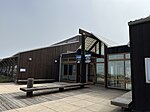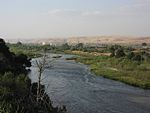Salinas River State Beach
Beaches of Monterey County, CaliforniaBeaches of Northern CaliforniaCalifornia State BeachesMonterey BayMonterey County, California geography stubs ... and 3 more
Parks in Monterey County, CaliforniaSalinas River (California)Tourist attractions in Monterey County, California

Salinas River State Beach is a beach at the river mouth of the Salinas River at Monterey Bay, in Monterey County, California. It is located at the south end of Moss Landing, California. The park can be accessed from the Potrero exit off of Highway 1, in Moss Landing. It is part of the 99 miles of Monterey County coastline.
Excerpt from the Wikipedia article Salinas River State Beach (License: CC BY-SA 3.0, Authors, Images).Salinas River State Beach
Monterey Dunes Way,
Geographical coordinates (GPS) Address Nearby Places Show on map
Geographical coordinates (GPS)
| Latitude | Longitude |
|---|---|
| N 36.783055555556 ° | E -121.79555555556 ° |
Address
Salinas River Dunes Natural Preserve
Monterey Dunes Way
95039
California, United States
Open on Google Maps







